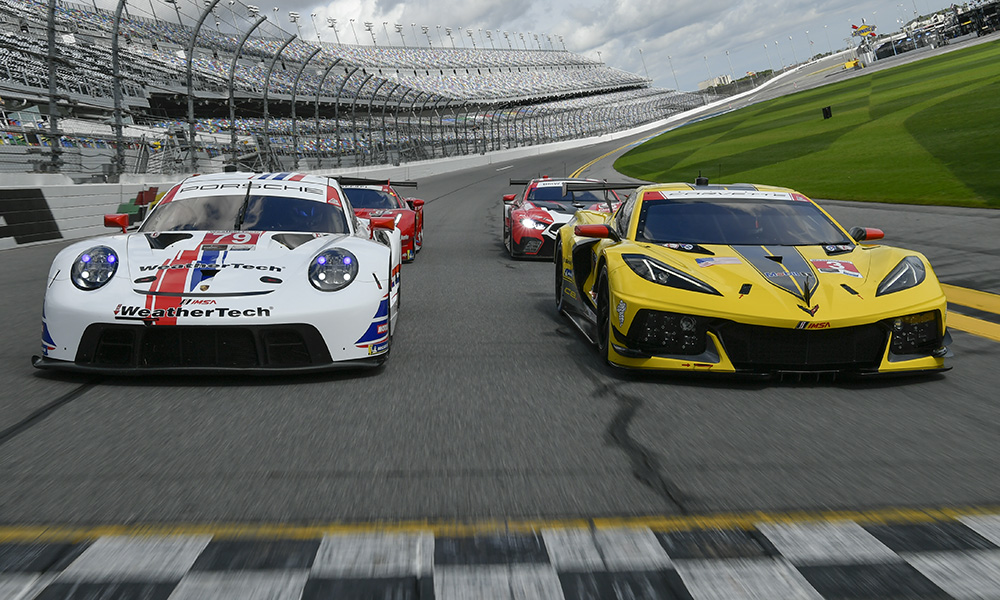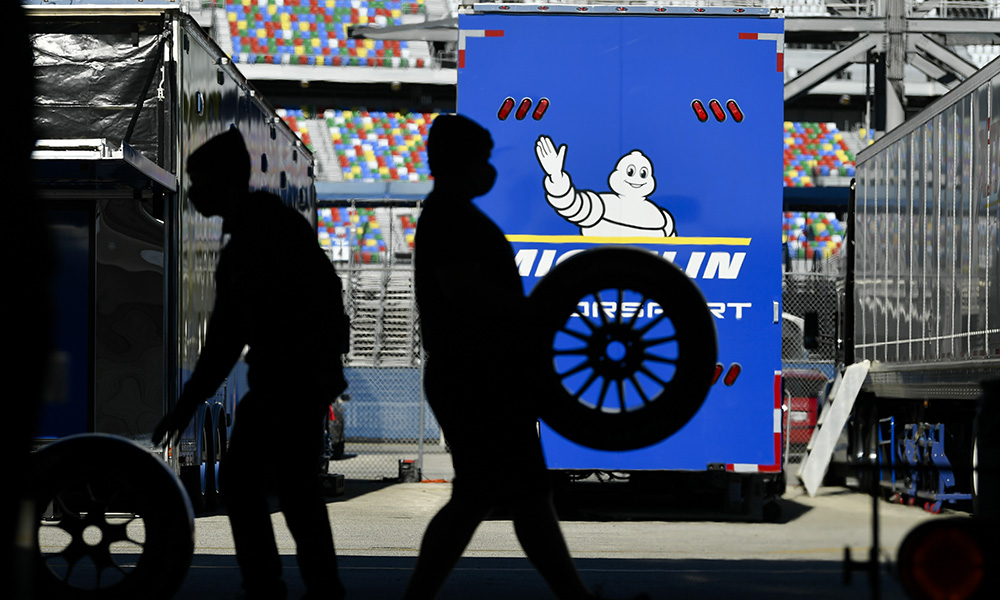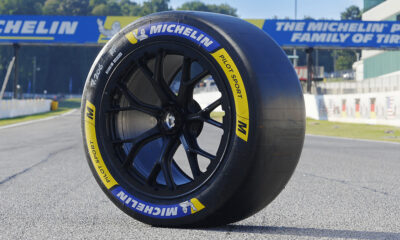
Photo: Michelin
Background
IMSA’s 2022 realignment of the former GT Le Mans class to GTD Pro with cars built on the GT3 platform, included a key decision regarding tires.
The GTD class has traditionally raced on a commercially available racing slick from IMSA’s official tire supplier. The GTLM class however was an open tire class and provided Michelin its only IMSA access prior to becoming the Official Tire of IMSA in 2019.
Following its long tradition of support at Le Mans, Michelin developed a full range of bespoke tires for each of its manufacturer partners competing in IMSA GTLM and the GTE Pro class in WEC.
GTLM teams could switch to their respective hard, medium, or soft compounds to meet their chassis needs, track conditions, and temperatures.
Teams could also mix and match compounds, sometimes simultaneously running two or even three compounds on different wheel positions to extract every hundredth of lap time.
To be prepared for any eventuality, some GTLM teams even mounted all three compounds at some races.
IMSA, in turn relied upon the performance of the Michelin GTLM confidential tires in establishing the desired stratification of classes to separate the field.

Photo: Michelin
Simplify
As the GTLM tires carried Michelin’s confidential and highly proprietary technology, they were developed, shipped, stored, mounted, distributed, and returned separately from the commercial tires used in the GTD, Michelin Pilot Challenge, and IMSA Prototype Challenge classes.
With up to five manufacturers each having its own soft, medium, and hard compounds and different sized front and rear tires, Michelin and its exclusive IMSA race tire distributors at Jackson were at times managing 30 different SKUs or stock keeping units, just for the GTLM class.
By comparison, less than half that the number covers all the other IMSA classes.
Now, both GTD and GTD Pro classes will have the same allocations of the pre-designated compound at each event and draw from the same commercial tire inventory. All IMSA teams use the same highly regarded Michelin treaded wet tires.

Photo: Mike Levitt/IMSA
Expectations
The result is that the WeatherTech Championship GTD and GTD Pro manufacturer entries will have identical GT3 cars, fitted with the same Michelin tires, and initially on the same IMSA Balance of Performance tables.
The returning GTLM teams have the bigger adjustment, no longer having their respective options and the mix and match capabilities to tune chassis handing or develop strategies.
The proven tire performance and long tread life of the Michelin commercial slick provides them with a consistent base to work from.
The GTLM drivers do however gain ABS, which is especially helpful in wet conditions.
For GTD drivers, who have been racing on the designated Michelin S9M tires since 2019, the adjustment will be more in terms of increased traffic as the GTD Pro cars will no longer have a clear performance advantage.
The GTD class field includes many established professionals, including several current or former factory shoes, along with a mix of rising talents and veteran competitors. Now, with identical cars and the same tires, many of the GTD Class drivers expect to effectively match their GTD-Pro counterparts during their stints.
The response to IMSA’s new GTD platform is already a big winner with 35 cars (13 in GTD Pro and 22 in GTD) and more than 100 GT drivers.
With a 61-car field and so many GT entries, a true test of tire and traffic management, race strategies and the performance of each driver and crew provide a fitting way to kick of the IMSA season and celebrate.
























